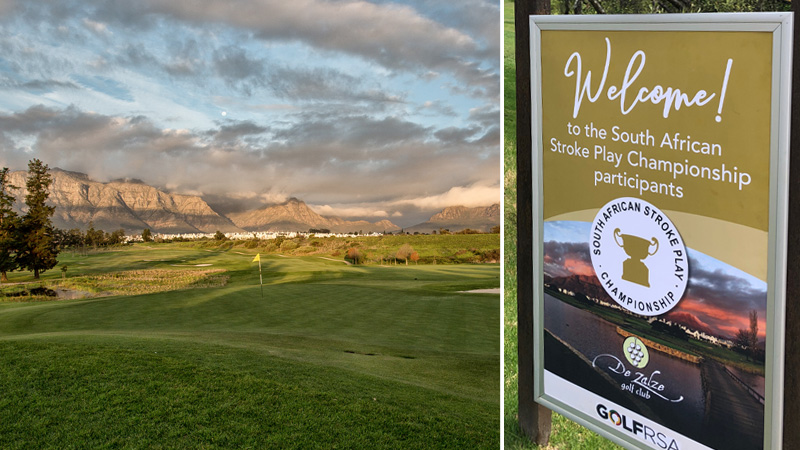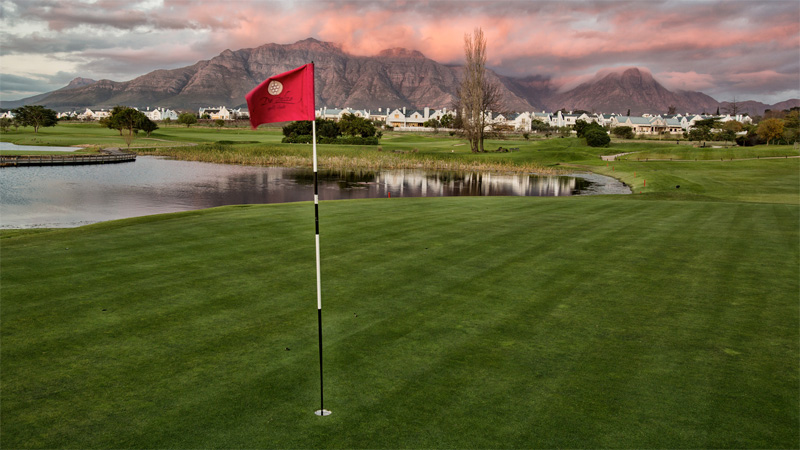Ready for a big game?
We are visiting at De Zalze Golf Estate this week to admire some incredible golf. It is the South African Stroke-Play Championship. The course is looking as good as ever and the golfers are looking better than ever. The standard of golf is really high. These elite amateur golfers are playing at the same level as a tour player. Many of them are in the qualifying process or are at least thinking of a career as a professional golfer in the near future. The stats of these amateur golfers are really close, and comparable to those on the PGA Tour, so they have every reason to make it!

For the casual golfer, there are a lot of things we can learn from the elite golfers playing the SA Stroke-Play Championship. We also have ‘big games’ like the annual club championship, monthly medal or our place to shine on a social golf tour. Compare these bigger games to your regular weekend game. There certainly is a little more pressure on them! How do we deal with it? Let’s have a look at what the elite amateur golfer applies to their games in order to be ready for the big game.
Routine – The pre-shot routine is incredibly important. It grounds you and creates a familiar environment for every shot. These golfers go through the same motions for every single shot and sticks to it throughout the round, and for four days. The routine is a very personal thing, so it’s something that you as a golfer have control over. The better we do at controlling the things we can, the better our results will be. Mike Weir has that nice long waggle in his hands before he takes it away and hits it. So does every other pro. Have a look on television next time and identify the pre-shot routine of the professionals. It’s unique, their own and consistent!
It’s the same game – Why does it look so simple when the big names just make the cut, week in and week out? Even the win, during the last putt, there are no differences to the other putts on the course. The answer is really simple: The things around the course change, not the course. So, the concept of the game does not change, no matter how big the event or stage. Hit the least amount of shots from A to B and you’ll win. And to make it even more interesting, the changes around the course (prize-money, weather, crowds, condition) is applied to everyone in the field. The game’s concept remains. It’s up to us to prevent these outside influences from making the game ‘harder’ than it already is. The routine as discussed above is therefor even more important now!
Play what you see – Do not try and make something happen that you are pretty sure is not actually possible. It’s good to put up a fight, but be careful if the gap is too small, the tree is too high, the wind is stronger than you think or the water is impossible to carry. Have a look at the PGA Tour Statistics here: https://www.pgatour.com/stats/stat.120.html – it talks about the scoring average of the elite of the world. If you want to be a top 20 golfer in the word, you need to make six birdies and four drops in every round. This gives you a -2 score on 18 holes and at least -8 over four days. Good enough to make loads of money! My point is, you WILL MAKE A DROP! So, in the event that you blocked the tee shot so far right and you see the very small gap through the trees that you know in your heart you won’t make, but still try, be careful… You can make a double or triple bogey very quickly. Play it safe, make the great par or a good drop. Yes, there are such things as a good drop. And for the high handicappers it is even simpler. You have that shot in your handicap of 12 already, so use it to your advantage. If you hit the greens in regulation, or just miss it, eventually you are at least putting and some of the putts will fall over the duration of 18 or 72 holes. Give it time, not skill. Your skill level is not going to improve during the round, your swing is remaining what it is!
No funny business – Like I just said, you are not going to suddenly create a much better swing during your round. Practice on the range, play on the course! The elite don’t worry about mechanical things (everything that happens before striking the ball) but rather visualizing the ball fly through the air and where it will land. By doing that, you sort of tell your hands and other levers what they’ll need to be doing to get the ball on that visualized path you just saw. I would say that more often than not you’ll actually pull it off. It’s amazing how thing post impact can influence your game and results. Try it, it’s easy. Going to the course and after 4 holes you start fiddling with a ‘fault’ (every swing has a fault, even the top player) you can’t fix it, you try something else, suddenly you ran out of holes and you end up make big numbers. Play the course, treat it like a playground. Fix it on the range and please, pay an expert PGA Pro at your club help you!
Last thoughts – Yes, there certainly is a level of pressure when you tee it up for club champs. You want the win, otherwise you won’t be there. It’s good that you want it. Never stop. A good friend said the only way to beat this game is to break par, not to beat the rest of the field. If you end up breaking par (handicap calculated) you are in it. Someone might have just done it better than you or you actually did it best. So you are playing with your handicap against the course, not the rest of the field. Do this to the best if your ability and there will be a win for you very soon!

Thank you for reading. Please visit De Zalze Golf Club on your next stop to the Western Cape. The course is amazing and the staff is incredible. You’ll have an all-round perfect golfing experience
Have a good one and see you on the fairways soon,
Alwyn Vorster
Head Pro, Rovos Rail.
Images: De Zalze Golf Estate.

